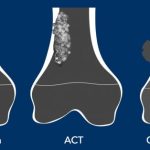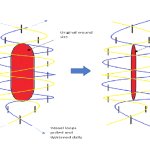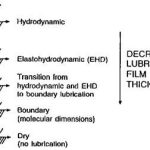General approach to history taking with patients have been discussed here:
1. Chief complaint: Common orthopedic complaints can be remembered using the mnemonic WRISD Pain
- Weakness: May be due to –
- Pain inhibition
- Muscle strain
- Neurologic interruption
- Restricted movement (stiffness): May be due to –
- Pain
- Muscle spasm
- Stretching of soft tissue contracture
- Mechanical blockage by osteophytes, loose bodies, fracture or effusion
- Instability (giving away or jumping out of place): May be due to –
- Traumatic damage of muscular, capsular or ligamentous structures
- Inherent laxity
- More apparent when the joint is positioned such that muscles have less mechanical advantage (overhead shoulder positions) or when a quick movement demand is faster than the reaction time for corresponding muscles (cutting or rotatory knee movements)
- Swelling: May be –
- Traumatic and rapid appearance: Hematoma or Hemarthrosis
- Slow appearance: Inflammation, Joint effusion, Infection, Tumor
- Painful: Active inflammation, Infection, Tumor
- Sensory disturbance (numbness or paresthesia): May be due to –
- Pressure from neighboring structure into nerve (e.g. PIVD)
- Local ischemia of nerve (nerve entrapment)
- Peripheral neuropathy
- Deformity
- Disability (functional loss)
- Pain: May be –
- Local pain (bone pain is deep pain commonly worse in evening)
- Referred pain:
- From scleratogenous sources (nondermatomal pattern with no hard neurologic findings): e.g. facet and disc generated pain
- From visceral sources (will have visceral complaints) e.g. cholelithiasis, cardiac ischemia
- Autonomic pain: vague, widespread and often associated with vasomotor and trophic changes
2. History of presenting illness:
a. Onset:
- Traumatic or atraumatic?
- Acute or insidious?
- History of overuse?
b. Mechanism of injury (if traumatic):
- Fall onto specific region or a structure within the region: Fracture, Dislocation or Contusion
- Excessive varus/valgus force, rotation or flexion/extension: Ligament/capsule or Muscle/tendon pathology
- Sudden axial traction to joint: Sprain or Subluxation
- Axial compression to joint: Fracture or Synovitis
c. Mechanism of overuse (if present):
- Position in which the patient works?
- Repetitive movement at work or during sports?
- Consider muscle strain, tendinitis, trigger points, or peripheral nerve entrapment
d. Grading of pain (if present): Mnemonic – Remember 4 “I”s
- Grade I (mild): Ignorable
- Grade II (moderate): Interferes with function and needs intermittent attention or treatment
- Grade III (severe): Invariably present and needs invariable attention or treatment
- Grade IV (excruciating): Incapacitating
e. If insidious, elicit following:
- Any associated systemic signs of fever, malaise/fatigue, lymphadenopathy, multiple affected areas?
- Local signs of inflammation?
- Local deformity?
- Associated neurological features?
f. Activities of daily living: To assess severity of symptoms
g. Red flag symptoms: Never ignore a “red flag”
- Pain preventing sleep
- Loss of appetite
- Temporal headache and blurred vision
- Loss of bowel and bladder control
- Rapidly progressive symptoms
- Painful swelling
3. Past history:
- Associated spinal complaints or radiation from spine?
- Another arthritis?
- Systemic disorders?
- Cancer?
4. Developmental history in children:
| Age (months) | Milestones |
| 1-2 | Holds up chin |
| 6-8 | Sits alone |
| 8-10 | Stands with support |
| 10-12 | Walks with support |
| 14 | Walks without support |
| 24 | Ascends stairs one foot at a time |






Just amazing